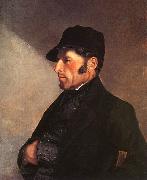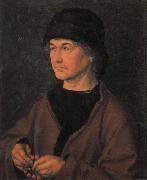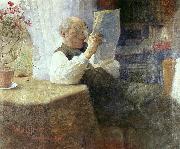Wholesale Oil Painting Reproductions No Minimum and Door to Door! |
|||||||||||
|
|
|||||||||||

|
|||||||||||
|
|
|
||||||||
All Gustave Courbet Oil Paintings |
||||||||
|
|
||||||||
|
|
||||||||
|
Artist Introduction: 1819-1877
French
Gustave Courbet Locations
was a French painter whose powerful pictures of peasants and scenes of everyday life established him as the leading figure of the realist movement of the mid-19th century.
Gustave Courbet was born at Ornans on June 10, 1819. He appears to have inherited his vigorous temperament from his father, a landowner and prominent personality in the Franche-Comte region. At the age of 18 Gustave went to the College Royal at Besancon. There he openly expressed his dissatisfaction with the traditional classical subjects he was obliged to study, going so far as to lead a revolt among the students. In 1838 he was enrolled as an externe and could simultaneously attend the classes of Charles Flajoulot, director of the ecole des Beaux-Arts. At the college in Besançon, Courbet became fast friends with Max Buchon, whose Essais Poetiques (1839) he illustrated with four lithographs.
In 1840 Courbet went to Paris to study law, but he decided to become a painter and spent much time copying in the Louvre. In 1844 his Self-Portrait with Black Dog was exhibited at the Salon. The following year he submitted five pictures; only one, Le Guitarrero, was accepted. After a complete rejection in 1847, the Liberal Jury of 1848 accepted all 10 of his entries, and the critic Champfleury, who was to become Courbet first staunch apologist, highly praised the Walpurgis Night. |
||||||||
|
|
||||||||
|
Portrait of the Artist's Father Painting ID:: 552 |
1844 |
|||||||
Height Width |
INS/CM Quality |
|||||||
|
X |
| |||||||
|
|
||||||||
All Albrecht Durer Oil Paintings |
||||||||
|
|
||||||||
|
|
||||||||
|
Artist Introduction: b.May 21, 1471, Imperial Free City of Nernberg [Germany]
d.April 6, 1528, Nernberg
Albrecht Durer (May 21, 1471 ?C April 6, 1528) was a German painter, printmaker and theorist from Nuremberg. His still-famous works include the Apocalypse woodcuts, Knight, Death, and the Devil (1513), Saint Jerome in his Study (1514) and Melencolia I (1514), which has been the subject of extensive analysis and interpretation. His watercolours mark him as one of the first European landscape artists, while his ambitious woodcuts revolutionized the potential of that medium. D??rer introduction of classical motifs into Northern art, through his knowledge of Italian artists and German humanists, have secured his reputation as one of the most important figures of the Northern Renaissance. This is reinforced by his theoretical treatise which involve principles of mathematics, perspective and ideal proportions.
His prints established his reputation across Europe when he was still in his twenties, and he has been conventionally regarded as the greatest artist of the Renaissance in Northern Europe ever since. |
||||||||
|
|
||||||||
|
|
Portrait of the Artist's Father Painting ID:: 28917 |
mk65
Oil on panel
18 11/16x15 9/16in
|
||||||
Height Width |
INS/CM Quality |
|||||||
|
X |
| |||||||
|
|
||||||||
All bruno liljefors Oil Paintings |
||||||||
|
|
||||||||
|
|
||||||||
|
Artist Introduction: Bruno Andreas Liljefors (1860-1939) was a Swedish artist, the most important and probably the most influential wildlife painter of the late nineteenth and early twentieth century.[1] He also drew some sequential picture stories, making him one of the early Swedish comic creators.
Liljefors is held in high esteem by painters of wildlife and is acknowledged as an influence, for example, by American wildlife artist Bob Kuhn.[1] All his life Liljefors was a hunter, and he often painted predator-prey action, the hunts engaged between fox and hare, sea eagle and eider, and goshawk and black grouse serving as prime examples.[1] However, he never exaggerated the ferocity of the predator or the pathos of the prey, and his pictures are devoid of sentimentality.
The influence of the Impressionists can be seen in his attention to the effects of environment and light, and later that of Art Nouveau in his Mallards, Evening of 1901, in which the pattern of the low sunlight on the water looks like leopardskin, hence the Swedish nickname Panterfällen.[1] Bruno was fascinated by the patterns to be found in nature, and he often made art out of the camouflage patterns of animals and birds. He particularly loved painting capercaillies against woodland, and his most successful painting of this subject is the largescale Capercaillie Lek, 1888, in which he captures the atmosphere of the forest at dawn. He was also influenced by Japanese art, for example in his Goldfinches of the late 1880s.[1]
During the last years of the nineteenth century, a brooding element entered his work, perhaps the result of turmoil in his private life, as he left his wife, Anna, and took up with her younger sister, Signe, and was often short of money.[1] This darker quality in his paintings gradually began to attract interest and he had paintings exhibited at the Paris Salon.
He amassed a collection of animals to act as his living models. Ernst Malmberg recalled:
The animals seemed to have an instinctive trust and actual attraction to him...There in his animal enclosure, we saw his inevitable power over its many residents??foxes, badgers, hares, squirrels, weasels, an eagle, eagle owl, hawk, capercaillie and black game.[1]
The greatness of Liljefors lay in his ability to show animals in their environment.[1] Sometimes he achieved this through hunting and observation of the living animal, and sometimes he used dead animals: for example his Hawk and Black Game, painted in the winter of 1883-4, was based on dead specimens, but he also used his memory of the flocks of black grouse in the meadows around a cottage he once lived in at Ehrentuna, near Uppsala. He wrote:
The hawk model??a young one??I killed myself. Everything was painted out of doors as was usually done in those days. It was a great deal of work trying to position the dead hawk and the grouse among the bushes that I bent in such a way as to make it seem lively, although the whole thing was in actuality a still life.[1]
|
||||||||
|
|
||||||||
|
|
Portrait of the artist's father Painting ID:: 88260 |
1884(1884)
Medium Oil on canvas
Dimensions 55 x 66 cm (21.7 x 26 in)
cyf |
||||||
Height Width |
INS/CM Quality |
|||||||
|
X |
| |||||||
|
|
||||||||
|
Prev Next
|
||||||||
|
|
||||||||
|
Related Paintings to bruno liljefors :. |
||||||||
|
|
||||||||
|
CONTACT US |



